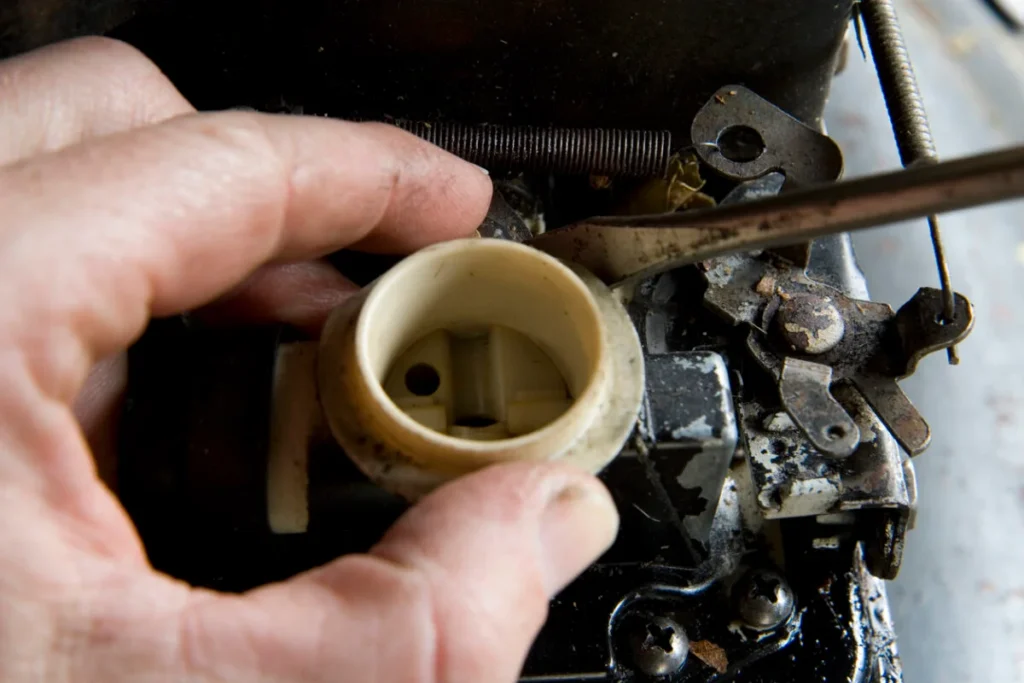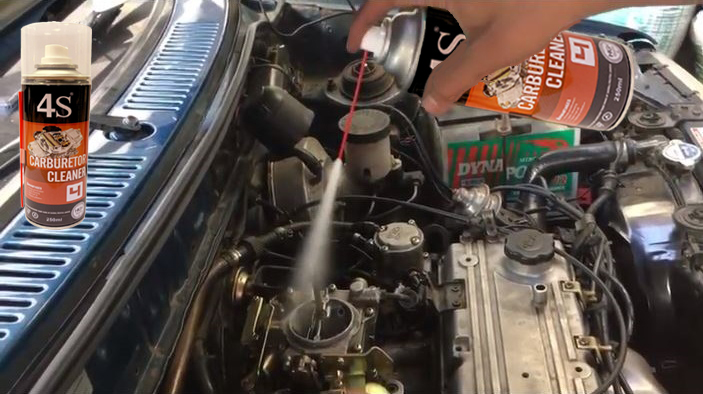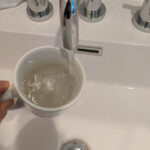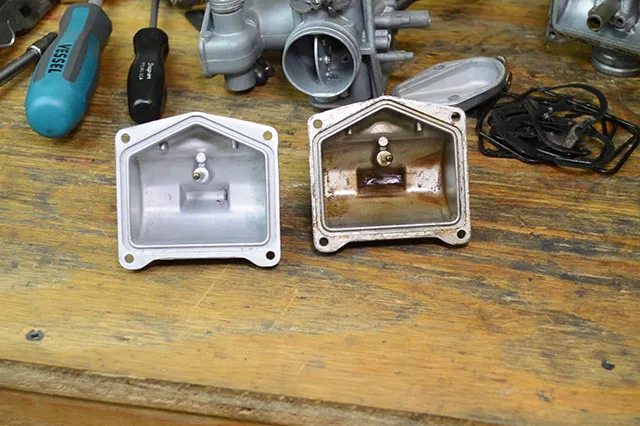A simple and effective homemade carburetor cleaner consists of a 50/50 mixture of white vinegar and water. Add a tablespoon of baking soda for extra cleaning power. The vinegar’s acidity breaks down deposits while baking soda provides gentle abrasion. Mix these ingredients in a container, then use a brush or toothbrush to apply the solution to the carburetor.
Let it sit for 10-15 minutes, scrubbing stubborn areas. Rinse thoroughly with water, wipe dry, and reassemble. This DIY cleaner is cost-effective, environmentally friendly, and customizable for regular carburetor maintenance. Always follow safety precautions and refer to your vehicle manual for specific instructions.
What Are The Benefits of Homemade Carburetor Cleaner?

The benefits of homemade carburetor cleaner extend beyond just cost savings. Here are some key advantages
Cost-effectiveness
Homemade carburetor cleaners are significantly more budget-friendly than their commercial counterparts. Using common household items like vinegar, baking soda, and lemon juice can lead to substantial savings over time.
Environmental Friendliness
Homemade cleaners often utilize natural and biodegradable ingredients, minimizing the environmental impact. This eco-friendly approach reduces the introduction of harsh chemicals into ecosystems during and after the cleaning process.
Customizability
The ability to tailor the cleaning solution to specific needs is a major advantage. DIY cleaners allow users to experiment with different ingredients and their proportions, adapting the formulation to different carburetor types and levels of buildup.
Readily Available Ingredients
The ingredients needed for homemade carburetor cleaners are commonly found in most households. This accessibility makes it convenient for individuals to perform regular maintenance without the need for special trips to the store.
Versatility
Homemade solutions are versatile and can be used for various cleaning purposes beyond carburetors. This versatility adds value as the same ingredients can often be repurposed for other household cleaning needs.
Reduced Chemical Exposure
Unlike some commercial cleaners that contain harsh chemicals, homemade solutions typically rely on gentler ingredients. This reduces the risk of exposure to potentially harmful substances during the cleaning process.
Personalization for Specific Needs
DIY cleaners allow users to address specific carburetor issues more effectively. By adjusting the formulation, individuals can personalize the cleaner to target stubborn deposits or particular types of buildup.
Educational Experience
Making homemade carburetor cleaner provides an educational opportunity for users to learn about the cleaning process, the properties of different ingredients, and the mechanics of their carburetor. This knowledge can empower individuals to take a more active role in their vehicle maintenance.
Minimized Packaging Waste
Commercial cleaners often come in packaging that contributes to environmental waste. Homemade cleaners, relying on common household items, typically involve less packaging, contributing to a reduction in overall waste production.
Immediate Availability
When carburetor issues arise unexpectedly, having the ingredients for a homemade cleaner readily available allows for quick and immediate action without the need to wait for a store to open.
What Are The Common Ingredients for Homemade Carburetor Cleaner?
Creating a homemade carburetor cleaner is often a matter of combining easily accessible household items, each serving a specific cleaning purpose. Here are some common ingredients used in DIY carburetor cleaner recipes
Vinegar
Vinegar serves as an acidic component that aids in breaking down and dissolving deposits on the carburetor.
Mix vinegar with water or other ingredients to create a solution suitable for carburetor cleaning. The acidity helps in tackling stubborn residues effectively.
Baking Soda
Baking soda provides abrasiveness, assisting in the mechanical removal of grime and dirt from carburetor surfaces.
Combine baking soda with liquids like vinegar or water to form a paste, offering a mild abrasive action during scrubbing.
Lemon Juice
The natural acidity in lemon juice works as a solvent to cut through grease and carbon buildup on carburetor components.
Use lemon juice independently or as part of a cleaning mixture to enhance its degreasing properties.
Isopropyl Alcohol
Isopropyl alcohol acts as a solvent, effectively dissolving and evaporating residues on the carburetor.
Include isopropyl alcohol in the cleaning solution for its fast-drying and degreasing capabilities.
Water
Water is used as a diluent to adjust the concentration of the cleaning solution, making it more suitable for specific cleaning needs.
Mix water with other ingredients to achieve the desired consistency and effectiveness of the carburetor cleaner.
Simple Green or Biodegradable Cleaner
Commercial cleaners like Simple Green or biodegradable options contribute additional cleaning power while maintaining environmental friendliness.
Combine these cleaners with other ingredients to create a comprehensive and eco-friendly carburetor cleaning solution.
Brushes or Toothbrushes
Mechanical agitation is crucial for dislodging and removing stubborn deposits from carburetor components.
Use brushes or toothbrushes to scrub away dirt, grime, and deposits, reaching into intricate parts of the carburetor.
Safety Gear (Gloves and Goggles)
Safety gear is essential for protecting the skin and eyes from contact with cleaning solutions, ensuring a safe cleaning process.
Wear gloves and goggles when handling and applying the cleaning solution to prevent irritation or injury.
Container or Bowl
A container or bowl is used for mixing and containing the cleaning solution during the preparation stage.
Mix the ingredients in a suitable container, ensuring proper blending before application to the carburetor.
Rags or Microfiber Cloths
Soft and lint-free cloths aid in wiping and drying carburetor components after cleaning, preventing damage to delicate parts.
Use these cloths to ensure a thorough cleaning process and to leave the carburetor components free of residues.
Vinegar and Baking Soda Carburetor Cleaner Recipe
Ingredients
- White Vinegar
- Baking Soda
- Water
Equipment
- Container or Bowl
- Brush or Toothbrush
- Rags or Microfiber Cloths
- Safety Gloves and Goggles
Instructions
Safety First: Put on safety gloves and goggles to protect your hands and eyes from any splashes or irritants.
Prepare the Cleaning Solution: In a container or bowl, mix equal parts white vinegar and water. The quantity depends on the size of your carburetor and the level of buildup.
Add Baking Soda: Gradually add baking soda to the vinegar and water mixture. Start with a tablespoon of baking soda and adjust as needed based on the severity of deposits.
Stir to Form a Paste: Stir the mixture thoroughly until the baking soda is dissolved, creating a paste-like consistency. The baking soda will add abrasiveness to enhance cleaning.
Apply the Cleaner: Use a brush or toothbrush to apply the vinegar and baking soda mixture to the carburetor components. Focus on areas with visible deposits or buildup.
Scrubbing: Gently scrub the carburetor surfaces with the brush or toothbrush. Pay close attention to areas where grime and deposits tend to accumulate.
Let it Sit: Allow the cleaning solution to sit on the carburetor components for about 10-15 minutes. This gives the vinegar and baking soda time to break down and loosen the deposits.
Rinse with Water: Rinse the carburetor components thoroughly with water to remove the cleaning solution and dislodged deposits. Use a hose or a container with clean water for this step.
Wipe Dry: Use a clean, dry rag or microfiber cloth to wipe the carburetor components dry. Ensure that no moisture is left behind to prevent corrosion.
Inspect and Repeat if Necessary: Inspect the carburetor components to ensure that deposits are effectively removed. If needed, repeat the process for stubborn or persistent buildup.
Reassemble: Once satisfied with the cleaning, reassemble the carburetor components and proceed with the reinstallation.
Dispose of Cleaning Materials: Dispose of the used cleaning solution following local environmental guidelines. Since the ingredients are household items, they can often be safely disposed of down the drain.
Tips for Effectively Using Homemade Carburetor Cleaner
Proper Removal and Disassembly of the Carburetor
Before cleaning, it’s crucial to disconnect the carburetor from the engine. This ensures thorough cleaning without the risk of damaging other engine components.
Refer to your vehicle’s manual for specific instructions on carburetor removal. Different vehicles may have unique requirements.
As you disassemble the carburetor, label each component and take pictures. This aids in reassembly and ensures you don’t miss any parts.
Use the appropriate tools for disassembly to avoid damaging delicate carburetor components. Follow torque specifications during reassembly.
While the carburetor is disassembled, inspect for signs of wear, tear, or damage. Address any issues before cleaning and reassembly.
Choose a clean and well-lit workspace for carburetor disassembly. This reduces the chances of dirt or foreign particles entering the components.
Use trays or containers to organize and store small parts during disassembly. This prevents loss and ensures everything is accounted for during reassembly.
Cleaning Techniques
Focus on components with visible deposits or areas prone to buildup. Avoid unnecessary disassembly if the carburetor is relatively clean.
Use soft brushes or toothbrushes for scrubbing. Ensure they are clean and free from debris to prevent introducing additional particles.
For stubborn deposits, let the cleaning solution soak on the components. This allows the solution to penetrate and break down hardened deposits.
Use compressed air to blow out loosened particles and residues. This ensures a thorough cleaning and helps in drying components quickly.
Be cautious with abrasive brushes on delicate parts. Use softer brushes for intricate components to prevent damage.
Pay special attention to carburetor passages and jets. Use thin wires or carburetor cleaning tools to ensure they are free from blockages.
Inspect float chambers, floats, and needles for proper functionality. Replace any worn-out or damaged parts.
Safety Tips
Work in a well-ventilated area to avoid inhaling fumes from the cleaning solution.
Always wear safety gloves and goggles to protect your hands and eyes from contact with cleaning solutions.
Keep the cleaning process away from open flames or sparks, especially if using flammable cleaning solutions.
If using isopropyl alcohol, be cautious, as it is flammable. Keep it away from heat sources and open flames.
Follow local environmental guidelines for the proper disposal of used cleaning solutions and materials.
Read labels on commercial cleaning products, and follow the recommended usage and safety instructions.
Take care during reinstallation to ensure that all components are correctly positioned and properly tightened. This prevents issues during engine operation.
When to Avoid Homemade Carburetor Cleaners?

While homemade carburetor cleaners can be effective in many cases, there are situations where it’s advisable to avoid using them and opt for professional-grade or commercially available carburetor cleaners.
Severe Carburetor Issues
If the carburetor has extensive damage, severe clogs, or mechanical issues, it’s best to consult a professional mechanic. Homemade cleaners may not be sufficient for complex problems.
Fuel System Contamination
If there’s contamination in the fuel system, such as water or other foreign substances, it may require specialized treatment that homemade solutions might not provide.
Electronic Fuel Injection (EFI) Systems
Modern vehicles often use electronic fuel injection (EFI) systems instead of carburetors. Homemade carburetor cleaners are not suitable for EFI systems, and attempting to clean them with such solutions can cause damage.
Risk of Component Damage
Delicate or intricate carburetor components, especially in newer vehicles, may be sensitive to certain homemade cleaning solutions. Harsh ingredients could lead to damage or accelerated wear.
Lack of Specific Cleaning Requirements
If the carburetor is relatively clean and does not exhibit significant deposits or performance issues, unnecessary cleaning may disrupt its calibration. In such cases, it’s better to leave the carburetor undisturbed.
Limited Accessibility or Expertise
If you lack the necessary tools, knowledge, or accessibility to safely and properly remove the carburetor for cleaning, it’s better to seek professional assistance.
Time Constraints
If you are dealing with time constraints and need a quick solution, professional-grade carburetor cleaners may offer a faster and more convenient option.
Specific Manufacturer Recommendations
Some vehicle manufacturers may recommend or require the use of specific commercial carburetor cleaners. Following manufacturer guidelines is essential to maintain warranty coverage and optimal performance.
Health and Safety Concerns
Individuals with respiratory issues or sensitivities to cleaning fumes should exercise caution when using homemade cleaners. Commercial products may have low-odor or fume-free alternatives.
Environmental Considerations
If you are concerned about the environmental impact, note that certain commercial carburetor cleaners are formulated to be environmentally friendly. Check product labels for eco-friendly options.
FAQ
What can you use if you don’t have carb cleaner?
If carb cleaner is unavailable, a mixture of white vinegar and water, or lemon juice and isopropyl alcohol, can serve as effective alternatives for cleaning a carburetor.
What can be used as carburetor cleaner?
Common household items such as white vinegar, lemon juice, and isopropyl alcohol can be used as effective homemade carburetor cleaners.
What is the active ingredient in carb cleaner?
The active ingredients in commercial carb cleaners often include solvents like acetone, toluene, or xylene, which help dissolve deposits and varnish on carburetor components.
Is carb cleaner safe for the engine?
Carb cleaner is generally safe when used appropriately for carburetor cleaning. However, caution must be exercised to prevent contact with other engine components, and it should not be used on electronic fuel injection (EFI) systems.
Does carb cleaner remove carbon?
Yes, carb cleaner can effectively remove carbon deposits from carburetors and engine components. It dissolves and loosens carbon buildup, aiding in the cleaning process.
Can I use WD-40 to clean a carburetor?
While WD-40 is a versatile product, it’s not specifically designed as a carburetor cleaner. It may help displace moisture and prevent corrosion but is not as effective as dedicated carb cleaners.
What dissolves engine carbon?
Engine carbon can be dissolved using solvents like acetone, toluene, or xylene found in commercial carb cleaners. Homemade solutions with vinegar or lemon juice can also help break down carbon deposits.
How do you remove carbon from a piston?
To remove carbon from a piston, use a combination of scraping, brushing, and cleaning with a suitable solvent. Commercial carbon-cleaning products or a mixture of white vinegar and water can be effective in breaking down and removing carbon deposits.
Final thoughts
On the whole, making a homemade carburetor cleaner is easy and cost-effective. Whether using a vinegar and baking soda mix or a lemon juice and isopropyl alcohol blend, these DIY solutions offer an eco-friendly alternative for maintaining your carburetor.
By following simple steps and safety precautions, you can keep your engine running smoothly without breaking the bank. So, next time your carburetor needs a clean, look no further than your kitchen cupboard for an effective and affordable solution. Happy cleaning!








